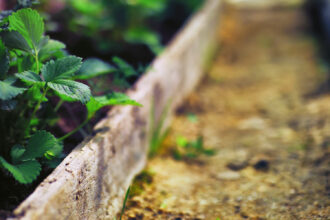Transparent roofs are becoming increasingly popular. Transparent roofs include both large roofs and small canopies or awnings. Even though they may seem delicate and even fragile, they are durable structures that protect against wind and rain, and are resistant to the weight of lying snow. What distinguishes a transparent roof from a typical roof is unlimited access to natural light.
What are transparent roofs made of?
The following plastics are used for transparent roofs:
- PMMA – polymethyl methacrylate,
- PC – polycarbonate,
- PVC – polyvinyl chloride,
- PET-G – polyester.
These materials are an alternative to glass. They transmit light to a varying degree and additionally illuminate a given surface or room. They are durable, resistant and easy to work with. In addition, many of their parameters can outperform glass. The plastics used for transparent roofs are relatively light. It is crucial from the point of view of roof, as it eliminates the costs of making complex structures.
Transparent roofs made of PMMA – polymethyl methacrylate – plexiglass
PMMA – polymethyl methacrylate, i.e. the popular plexiglass, is a stiff and transparent thermoplastic material. It is naturally colourless and very transparent. PMMA is resistant to many corrosive substances. The hardness of plexiglass is comparable to that of brass and light alloys, between wood and steel. The processing of plexiglass is not complicated – it can be cut manually, with a saw or laser. It can also be drilled, turned, milled, engraved, sandblasted and polished.
Transparent roofs made of PC – polycarbonate
Polycarbonate panels and sheets are obtained from the polycondensation of bisphenol: phosphene. This material combines optical (transparency), thermal (thermal insulation) and mechanical (impact strength) parameters. Polycarbonate comes in the form of solid and cellular sheets. Solid sheets are characterised by higher hardness, impact strength and better transparency. Solid sheets can be thermoformed. Their impact strength is about 300 times higher than that of glass, 40 times higher than PMMA and twice higher than PEFG. On the other hand, the structure of cellular PC sheets provides better thermal insulation. They can be bent, but only using the cold method.
Transparent corrugated and trapezoidal sheets made of PVC – polyvinyl chloride
PVC is a very stable and flexible material. It transmits light and is resistant to adverse weather conditions, including UV radiation. It is resistant to ageing processes, to exhaust fumes and even to the aggressive sea climate. Polyvinyl chloride is also fire retardant. Transparent PVC roofs are made of profiled hardened polyvinyl chloride sheets. This material can be used at temperatures ranging from –20°C to + 60°C. Thanks to polyvinyl chloride it is possible to make roofs that are very transparent.
Transparent roofs made of PET-G – polyester
Polyester (PET-G) is a material made of polyester resins reinforced inside with a glass fibre mat. It is a material resistant to adverse weather conditions, including UV radiation. In addition, PET-G polyester is not subject to ageing processes. The temperature range for this material is -30°C to +120°C, and its snow load resistance is 100 kg/m2.


